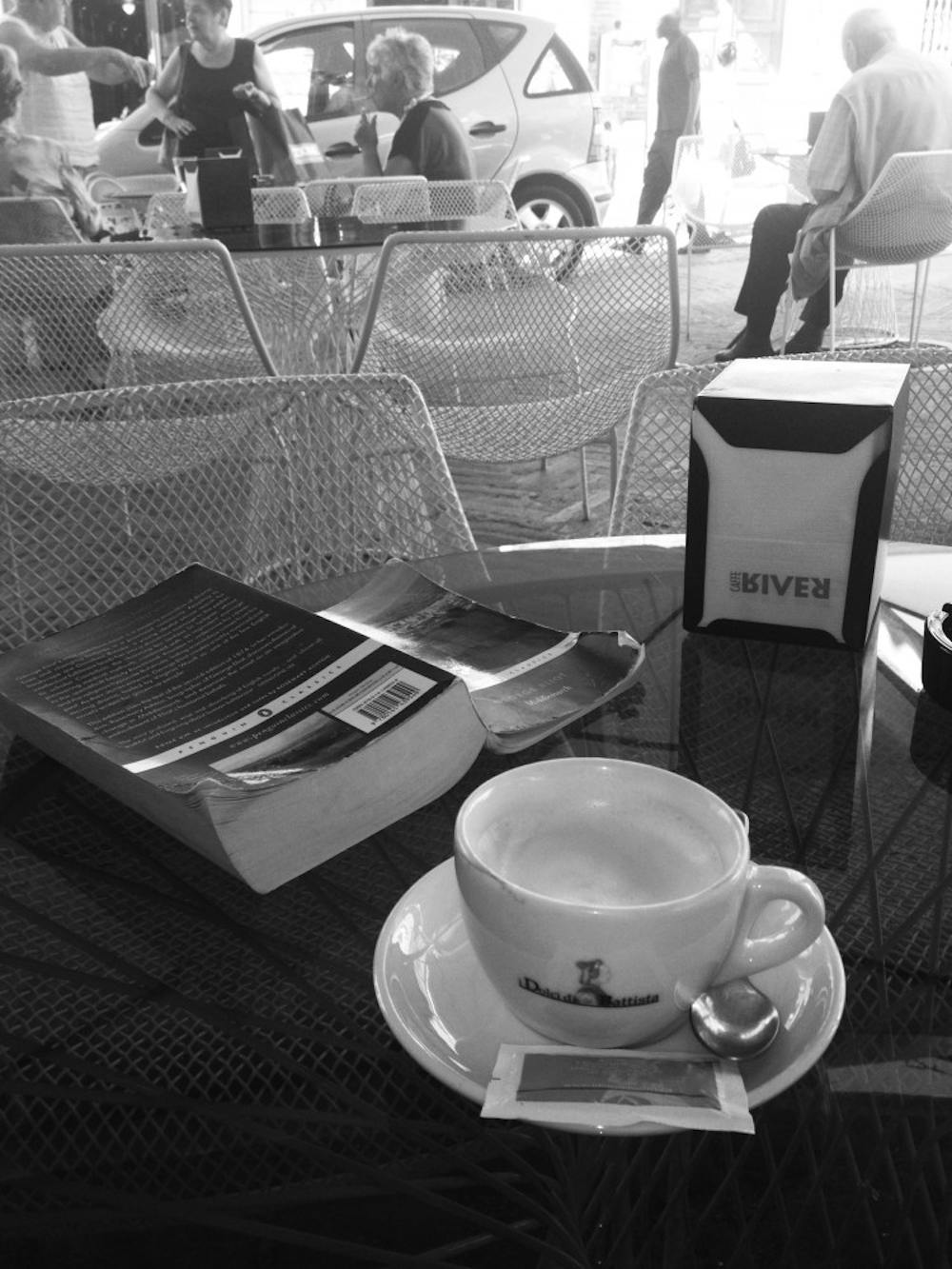From the most delicious iced cappuccino at Rome’s Giolitti to subpar cappuccinos at the campus café, the cappuccino will forever be linked to my time abroad in a small town in Italy. Most memorably, each morning, I’d stop by Urbino’s Café degli Amici on the way to class, where the same two baristas would smile at me and knowingly ask, “un cappuccino?” before whipping up the drink with impressive speed.
Upon my return home, I struggled to perfect a standard American coffee order. A self-proclaimed coffee snob, the flavored lattes that I once craved now seemed too sweet and too large, but opting for a plain drink with nonfat milk failed to satisfy the taste buds I liked to imagine I had carefully cultured during my time in Italy. This elitism proved to be short-lived, and I soon slipped back into old habits, finding no fault with skim milk, artificial sugar or size.
With summer memories resurfacing, I began a search for Princeton’s best cappuccino. Ordering the drink as is — no skim milk, no syrups, no special ordering — I hoped to put my nostalgia to use.
Clinging to my safety net, I began at Starbucks. The preset at Starbucks is 2 percent milk, meaning its cappuccino is slightly less creamy than in Italy, where full fat milk is standard. (Those craving a more authentic drink might consider special ordering whole milk.) Despite its reputation as fast food coffee, Starbuck’s ratio of espresso to milk makes for a reliable drink that avoids the overly milky trap of some cafés.
I’ve always been on the Starbucks side of the Starbucks/Small World coffee divide, but on day two I headed into enemy territory. The creaminess of the drink initially surprised me, as I was no longer used to such rich milk. While Small World's cappuccino took a few sips to get used to, its thickness means Small World’s version can hold its own in a smaller size, which reflects its Italian counterparts.
On my last trip to Rojo’s Roastery, I was turned off by the steep prices and an empty punch card has been sitting on my desk since November. Again, I found my experience was negatively affected by the high expectations I set for a $5 drink. While Italian cappuccinos can almost serve as a breakfast themselves, this version left me underwhelmed. Rojo’s also seems to turn its nose up at the American coffee market by calling a $5 12-ounce a “large.” I could accept this attitude if it truly replicated the Italian cappuccino experience, but I resented the highbrow presentation that did not match the quality of the overly milky, fairly average drink.
My last stop may seem unlikely, but as I learned abroad, never judge a café by its exterior. Yes, Wawa is a convenience store, surrounded by construction fences and debris, but my own authentic Italian Café degli Amici had a small, far from glossy appearance across the street from a construction site. It’s no secret that Wawa’s normal coffee prides itself on a high standard, and its cappuccino isn’t too shabby either.
Overall, despite an entire week of cappuccino consumption, I had failed to find the perfect cup. My to-go thermos probably didn’t help the whole “recreate Italy” mission. But I did find shadows of my Italian experience in some unlikely places.

Considering its stellar reputation and charm, I probably should have enjoyed Rojo’s the most. However, my love of the Italian cappuccino was less about perfect espresso and more about the people, places and morning routine I associate it with.
Chatting with my favorite Starbucks baristas reminds me of conversations with Café degli Amici’s baristas, who were patient with my broken Italian and sprinkled a bit of cocoa powder on my cappuccino for good luck before an exam. The café was the default meeting place. Likewise, going to Starbucks is always a social experience as I always seem to run into people — whether I want to or not.
Though ordering a cappuccino off Wawa’s touch screen may seem more akin to a vending machine, the Wa’s price accessibility makes the cappuccino a more student-friendly version of the traditional status symbol. For the month of April, any size cappuccino is only $1.99. Café degli Amici may have only had one size option for a cappuccino, and it certainly wasn’t a 24-ounce cup, but its reasonable prices made it the ideal breakfast spot for students.
I realized that even after all those Italian cappuccinos, I keep hoping that Starbucks comes up with some outlandish new drink that I’ll probably never try, and I’ll wait patiently for a drink at Wawa while an employee finishes making a cheesesteak for the customer before me because I am not really the coffee snob that I proclaimed myself to be.

While that conclusion after a cappuccino tour will irritate coffee elitists, I don’t think my love of fast-food coffee is totally incompatible with the Italian coffee experience. I prefer a social experience, an accessible experience — what I think a good café provides, which goes beyond the richness of the espresso or the barista’s perfect frothing.








